Nearly 85% of the rice we eat in the U.S. is grown by American farmers. Rice was grown by early American colonists as a major crop in 1700. rice is grown in over 100 countries and on every continent except Antarctica. There are more than 40,000 different varieties of rice. In fact, rice is the main food for half of the people in the world. Commercial production of rice began in Texas in the 1800s. Texas is ranked 6th for rice production in the U.S. Rice is grown in the upper Gulf Coast area of Southeast Texas. In 2016, Texas farmers grew 193,000 acres of rice!
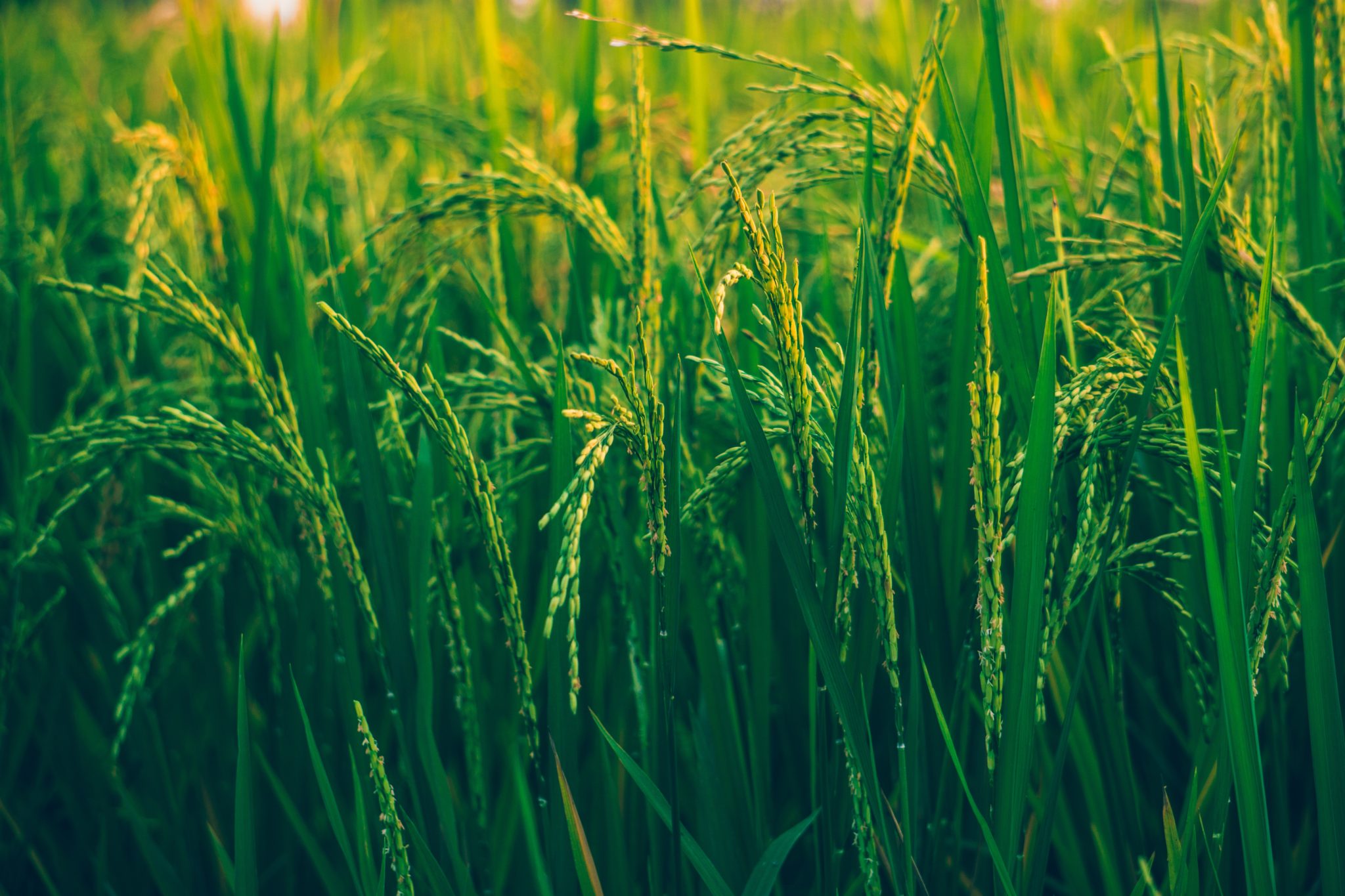
Do you know how rice is grown?
Step 1: Field Prep – Rice fields are prepared for planting with precision GPS or laser-guided grading equipment to ensure the field is level.
Step 2: Flooding and Seeding – Water is flooded 5 inches deep into the fields. Rice seed is soaked in water and loaded into a plane which flies 100 mph over the field and drops the seed from the air. The heavy seeds sink into the soil and begin to grow.
Step 3: Rice Grows and Matures – Rice seedlings grow to maturity in four or five months. Early applications of crop protection materials ensure pure rice at harvest. The rice reaches a height of 3 feet as it matures. As the rice grows, the water level is maintained at 5 inches deep. In late summer, the grain heads begin to appear on the top of the plants.
Step 4: Harvest – In late summer, the grain heads are mature and ready for harvest. Before harvest can begin, the fields must be drained and allowed to dry. State of the art harvesters enter the fields and collect the ripe grain. Specialized tractors and wagons receive the harvested grain to carry it from the field.
Step 5: Milling and Storage – The harvested rice is carefully dried to the ideal moisture level for storage until a customer places their order. At the mill, the hull is removed first, leaving brown rice. White rice is the result of gently removing the bran layers to leave the inner, pearly grain.

Basic Parts of a Rice Plant
Rice grains are enclosed in a tough hull which must be removed. Underneath is the nutritious whole grain which may be brown, reddish, or black depending on the color of the bran layers. All rice can be eaten at this stage which is 100% whole grain, but most are processed further. Whole grain rice is sometimes called brown rice. Each grain is made up of three main parts:
- Bran – the bran is the multi-layered outer skin of the edible rice grain.
- Germ – The germ is the embryo which has the potential to sprout into a new plant. It contains many B vitamins, some protein, minerals, and healthy fats.
- Endosperm – The endosperm is the germ’s food supply, which provides essential energy to the young plant so it can send roots down for water and nutrients, and send sprouts up for sunlight’s photosynthesizing power. The endosperm is by far the largest portion of the rice grain. It contains starchy carbohydrates, proteins and small amounts of vitamins and minerals.
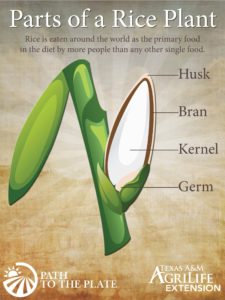
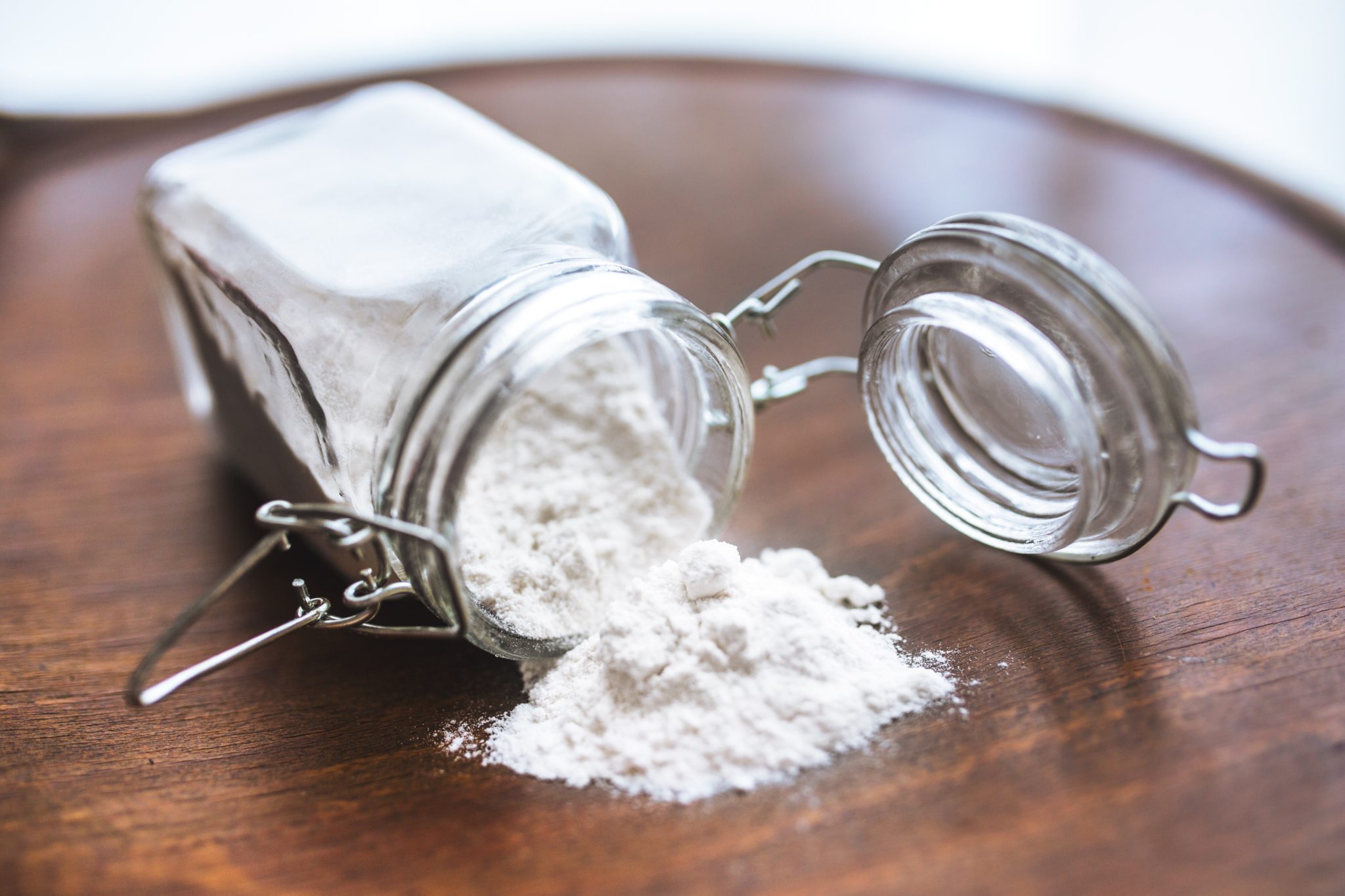
By-Products of Rice
The by-products of rice can be turned into edible and inedible products. Some common edible products include:
- Rice bran oil which can be turned into high quality cooking oil
- Rice flour, white or brown
- Cereals and snacks
- Rice starch can be used as a thickener in sauces and desserts
- Rice syrup can be used as a natural sweetener
Inedible by-products include:
- Rice hulls can be used for mulch
- Broken rice can be used for rice flour and pet foods
Other common by-products include:
- Packing peanuts
- Abrasives

Health and Nutrition
Rice is a source of carbohydrates to fuel the body and is a staple food for more than two-thirds of the world’s population.
- Rice is also fat, cholesterol, and sodium free, as well as being non-allergenic and gluten-free.
- MyPlate recommends that at least one-fourth of the plate should be grains, specifically whole grains. In addition, at least 1/2 of our serving should be whole grains.
- Whole grain foods provide fiber, protein and carbohydrates, vitamins and minerals. Not all grains are considered whole grains. an example of this is white rice that has been milled to remove the bran and germ layers. This results in many of the vitamins and minerals being lost in the process and added back, which is known as enriched grains.
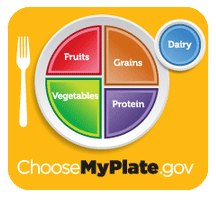
References
USA Rice (2017). How rice is grown. Retrieved from http://www.thinkrice.com/on-the-farm/how-is-rice- grown/California Rice Commission (2017).
How rice grows. Retrieved from http://calrice.org/industry/how-rice- grows/USA Rice (2017). Where rice is grown. Retrieved from http://www.thinkrice.com/on-the-farm/where-is-rice- grown/USDA
Economic Research Service (2016). Rice Outlook. Retrieved from http://usda.mannlib.cornell.edu/ usda/ers/RCS//2010s/2016/RCS-10-14-2016.pdf
